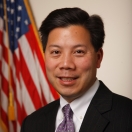
Ed. Note: This has been cross-posted from The Huffington Post.
For Asian-American families, there is nothing more valued than education. As we celebrate Asian-Pacific American Heritage Month, it is important to reflect on where our communities stand on educational achievement and where we can improve.
In 2010, President Obama made a commitment to double the number of college graduates by 2020 because he understood that a post-secondary education is essential to preparing Americans for the jobs of the future. As the employment report for April 2014 showed, the unemployment rate for those with a bachelor degree or higher was 3.3 percent, nearly half the rate of someone with only a high school education (6.3 percent). Over the next decade, the number of jobs that require more than a high school diploma will increase significantly faster than jobs that require only a high school diploma.
According to new data compiled by the Labor Department for 2013, Asian-Americans and Pacific Islanders overall have done well in obtaining a college education, with over 53.4 percent of their population holding a bachelor degree or higher. This is substantially higher than the next closest group, whites, where 31.9 percent have a college degree. As with every other race, obtaining a college degree means facing lower rates of unemployment. For AAPIs, having a college education means shaving nearly 2 percentage points off the unemployment rate compared to AAPIs with only a high school education.

While the overall educational attainment rate is high, AAPIs are not a monolithic group, and wide disparities exist among different subgroups. Indian-Americans have the highest rate of college graduates (76.1 percent), followed by Korean-Americans (58.7 percent) and Chinese-Americans (56.8 percent), while Vietnamese-Americans trailed significantly with only 29.5 percent holding a college degree. Of particular concern are Native Hawaiian and Pacific Islanders, among whom only 26.5 percent have a college degree and nearly one-third have only a high school education.

This disparity in educational attainment rates should serve as a call to action. Even though the AAPI community as a whole is prospering, what can we do to ensure that everyone in our community is able to access the American Dream?
Here at the Labor Department, we are committing significant funds this year to offer job training services that lead toward an associate or bachelor’s degree, including $450 million in funds as part of the next round of the Trade Adjustment Assistance Community College and Career Training program. We’re also working with Registered Apprenticeship sponsors and colleges to turn years of apprenticeship training into college credits. These are just a few of our programs that will help AAPIs advance their educational and employment goals.
We also need to fix our broken immigration system to encourage more highly educated foreign-born workers to come to the United States. If we are to compete in a global economy, we must continue to attract and retain the world’s brightest minds. Too many foreign students – many from Asian countries – come to the United States to further their education but must return home when they cannot obtain a green card or immigrant visa. As part of President Obama’s immigration reforms, he has called for “stapling green cards” to the diplomas of foreign graduates students in science, technology, engineering and mathematics fields.
This month is an appropriate time to reflect on the accomplishments of the AAPI communities – from earliest achievements of the Chinese Railroad Workers completing the nation’s first transcontinental railroad to today’s success in nearly every industry and aspect of American society. But we must continue working to make sure all members of our communities are able to succeed.
Chris Lu is the deputy secretary of labor.


